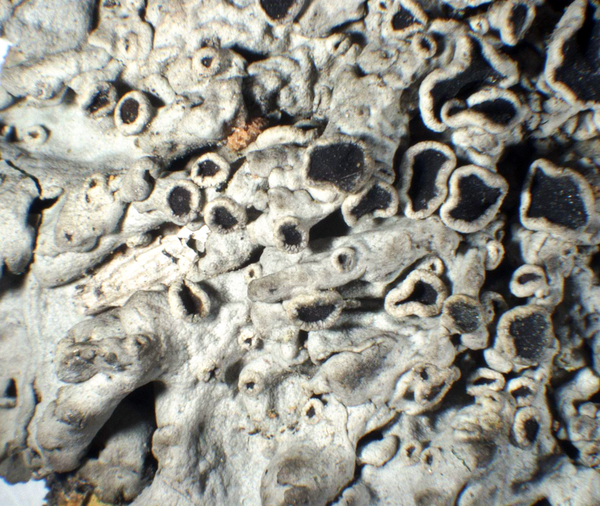Physciella poeltii (Frey) D. Liu & Hur
Index Fungorum, 464: 1, 2020. Basionym: Physcia poeltii Frey - Ber. Schweiz. bot. Ges., 73: 490, 1963.
Synonyms: Phaeophyscia poeltii (Frey) Nimis; Physciella poeltii (Frey) D. Liu & J.S. Hur
Distribution: N - VG (TSB 17381), Frl (TSB 12327), Ven (Anzi Lich. Ven. 22: Moberg 1994, Lazzarin 2000), TAA (Nascimbene & al. 2007b), Lomb (Zocchi & al. 1997), Piem (Valcuvia 2002, 2002b, Piervittori 2003), VA (Piervittori & Maffei 1996, 2001, Piervittori & Isocrono 1999, Matteucci & al. 2008c, Ongaro & al. 2022). C - Tosc (Loppi & Putortì 1995b, Loppi & al. 1996b), Laz (Herb. Ravera 338), Abr (Recchia & Villa 1996), Mol (Nimis & Tretiach 1999, Caporale & al. 2008), Sar (Moberg 1994). S - Camp (Aprile & al. 2003b), Cal (Puntillo 1996), Si (Campisi & al. 2020).
Description: Thallus foliose, heteromerous, dorsiventral, narrow-lobed, closely adpressed, forming up to 3(-4) cm wide rosettes. Lobes 0.3-1.5(-2.5) mm wide, contiguous to separate, especially in the younger parts, ash-grey to whitish grey, matt, smooth to finely rugose. Lower surface cream-coloured at margin, pale brown in central parts, with mostly simple rhizines. Upper cortex paraplectenchymatous, with a distinct epinecral layer; medulla white; lower cortex prosoplectenchymatous, not well delimited from the medulla. Apothecia common, lecanorine, often crowded in central parts of thalli, sessile, to 3 mm across, with a black, epruinose disc and an entire to weakly crenulate thalline margin, sometimes with a crown of whitish rhizines in lower part. Epithecium brown; hymenium and hypothecium colourless; paraphyses slender, simple or forked in upper part, the apical cells clavate, with a thin, dark brown cap. Asci 8-spored, clavate, the K/I+ blue tholus penetrated by a faintly amyloid apical cushion with parallel or diverging flanks, the wall K/I-, surrounded by a K/I+ blue outer layer, Lecanora-type. Ascospores 1-septate, brown, ellipsoid, (16-)18-22(-28) x (6-)8-10(-13) μm, the wall thickened at apex and at septum, intermediate between the Physcia- and Pachysporaria-types. Pycnidia black, immersed. Conidia ellipsoid, 3-3.5 x c. 1 μm. Spot tests: cortex and medulla K-, C-, KC-, P-, UV-. Chemistry: without lichen substances.Note: a temperate species found on isolated deciduous trees with nutrient-rich bark, especially in montane valleys. For further information see Moberg (1994) and especially Masson (2011), who could not confirm the presence of hyaline hairs on the upper surface, which were mentioned by several earlier authors.
Growth form: Foliose, narrow lobed
Substrata: bark
Photobiont: green algae other than Trentepohlia
Reproductive strategy: mainly sexual
Commonnes-rarity: (info)
Alpine belt: absent
Subalpine belt: absent
Oromediterranean belt: absent
Montane belt: absent
Submediterranean belt: rare
Padanian area: absent
Humid submediterranean belt: rare
Humid mediterranean belt: very rare
Dry mediterranean belt: absent
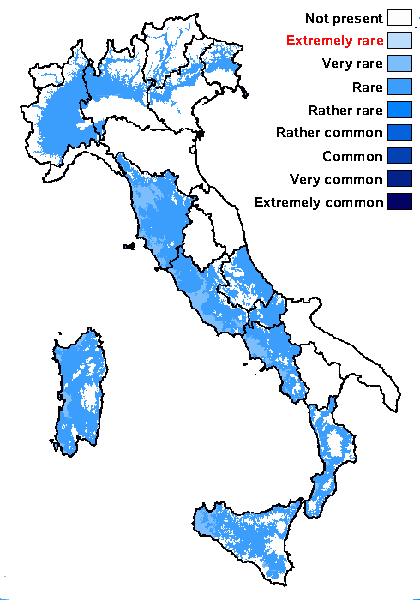
Predictive model
Herbarium samples
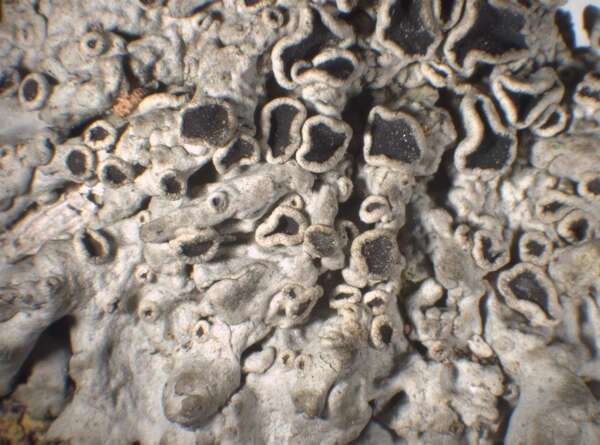

P.L. Nimis; Owner: Department of Life Sciences, University of Trieste
Herbarium: TSB (35720)
2003/01/22
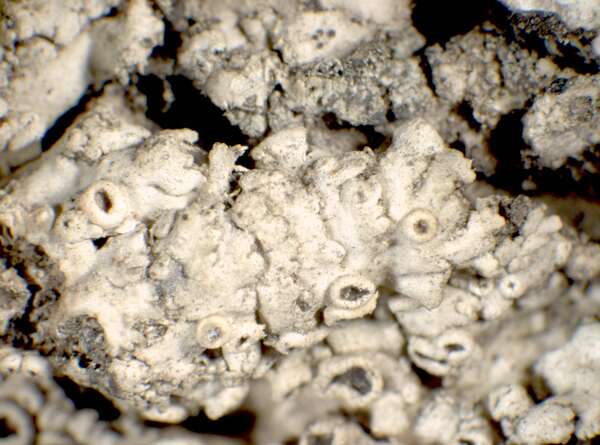

P.L. Nimis; Owner: Department of Life Sciences, University of Trieste
Herbarium: TSB (8831)
2001/12/05
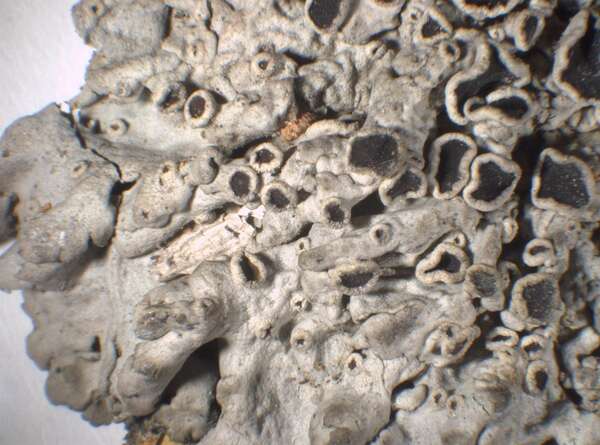

P.L. Nimis; Owner: Department of Life Sciences, University of Trieste
Herbarium: TSB (35720)
2003/01/22
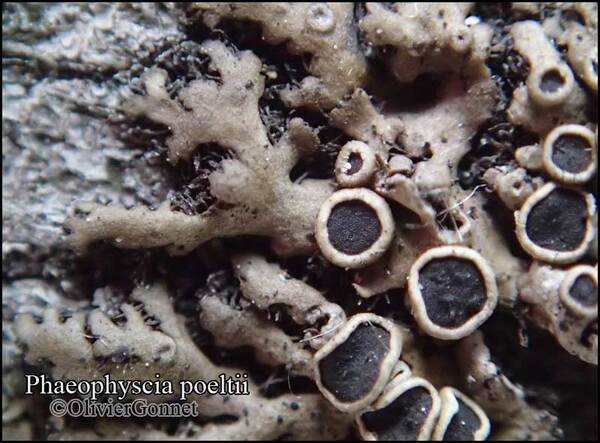
Courtesy Danièle et Olivier Gonnet - Source: https://www.afl-lichenologie.fr/Photos_AFL/Photos_AFL_P/Text_P_2/Phaeophyscia_poeltii.htm
France, session AFL 2014 - Parc du Mercantour - Alpes-de-Haute-Provence
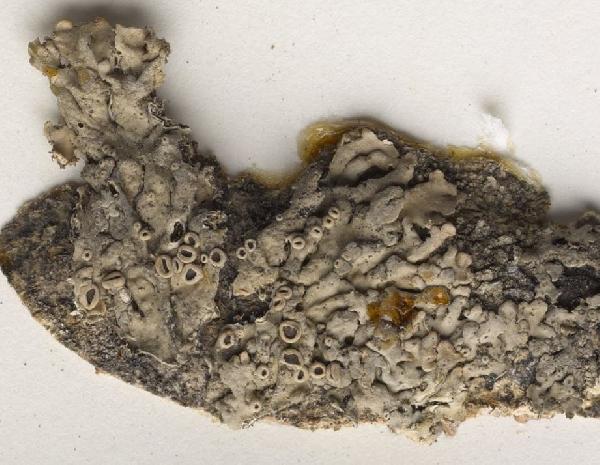
Detail from: https://gzu.jacq.org/GZU000286328
GZU000286328 - Collector Frey,E. 25028
Date 1962-05-03
Location Switzerland / Ticino
Label Ticino, Tesserete, Juglans am Weg Vaglio-Lugaggia ; Alt. 555 m
Habitat Juglans mit Ph. orbicularis labrata, leptalea & agglutinata.
Annotations GZU Inv.-Nr. 55-97
Lichenes Helvetici 4277 - Flechten der Schweiz, Lichens de la Suisse, Licheni della Svizzera
Growth form: Foliose, narrow lobed
Substrata: bark
Photobiont: green algae other than Trentepohlia
Reproductive strategy: mainly sexual
Commonnes-rarity: (info)
Alpine belt: absent
Subalpine belt: absent
Oromediterranean belt: absent
Montane belt: absent
Submediterranean belt: rare
Padanian area: absent
Humid submediterranean belt: rare
Humid mediterranean belt: very rare
Dry mediterranean belt: absent

Predictive model
| Herbarium samples |


P.L. Nimis; Owner: Department of Life Sciences, University of Trieste
Herbarium: TSB (35720)
2003/01/22


P.L. Nimis; Owner: Department of Life Sciences, University of Trieste
Herbarium: TSB (8831)
2001/12/05


P.L. Nimis; Owner: Department of Life Sciences, University of Trieste
Herbarium: TSB (35720)
2003/01/22

Courtesy Danièle et Olivier Gonnet - Source: https://www.afl-lichenologie.fr/Photos_AFL/Photos_AFL_P/Text_P_2/Phaeophyscia_poeltii.htm
France, session AFL 2014 - Parc du Mercantour - Alpes-de-Haute-Provence

 DOLICHENS
DOLICHENS
